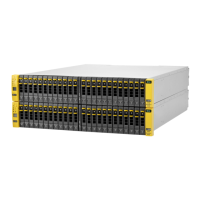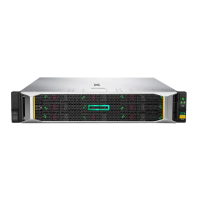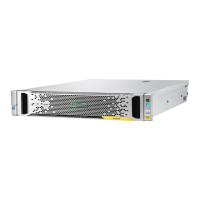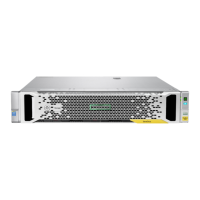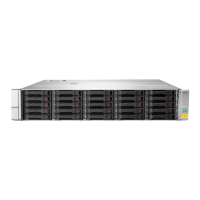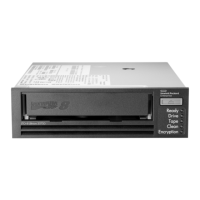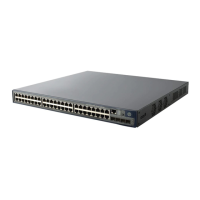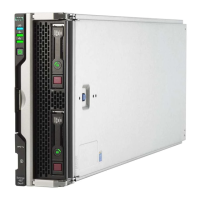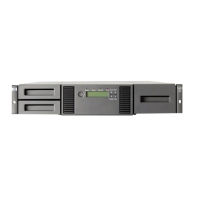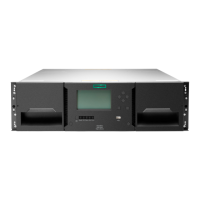Procedure
Preparation:
1. Unpack the component and place on an ESD safe mat.
2. Connect to the HPE 3PAR Service Processor (SP)
Browse to the IP address:
https://<sp_ip_address>:8443
3. Log in to the HPE 3PAR SP.
With the admin account credentials, the HPE 3PAR SP Service Console (SC) interface displays.
4. Initiate a maintenance window that stops the flow of system alerts from being sent to HPE by setting
Maintenance Mode.
a. From the SC interface, select Systems.
b. Select Actions > Set maintenance mode, and then follow the instructions in the dialog that
opens.
TIP:
When putting the storage system in maintenance mode or editing the maintenance mode,
you need to specify the duration in hours and a description of the reason for the
maintenance window.
To edit the maintenance window, select Actions > Set maintenance mode, and then click
the Edit icon next to the maintenance window.
5. Initiate Check Health of the storage system.
a. From the SC interface, select Systems.
b. Select Actions > Check health, and then select the Check health button. A scan of the storage
system will be run to make sure that there are no additional issues.
A scan of the storage system will be run to make sure that there are no additional issues.
CAUTION:
If health issues are identified during the Check Health scan, resolve these issues before
continuing. Refer to the details in the Check Health results and review the documentation.
6. Review the information in the email alert notification.
If the email notifications are enabled, information about the failed port due to the failed SFP
Transceiver is provided in an email alert notification. The port position in the storage system is
provided as Node:Slot:Port (N:S:P).
7. Review the information in the HPE 3PAR Service Console (SC) alert notification.
An alert notification banner appears that contains the information for the failed port due to the failed
SFP. In the alert notification banner, the port position is provided as Node:Slot:Port (N:S:P). To
expand the box, click the banner, which shows additional information about the nature of the alert.
Click the details link to be taken to the Activity view for the appropriate component. You can also
view a graphical representation of the components from the Schematic view.
Service of the hardware components 29
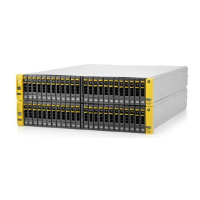
